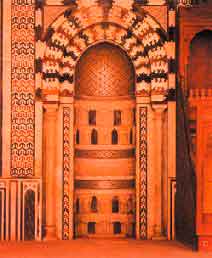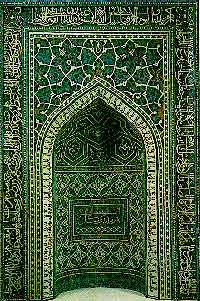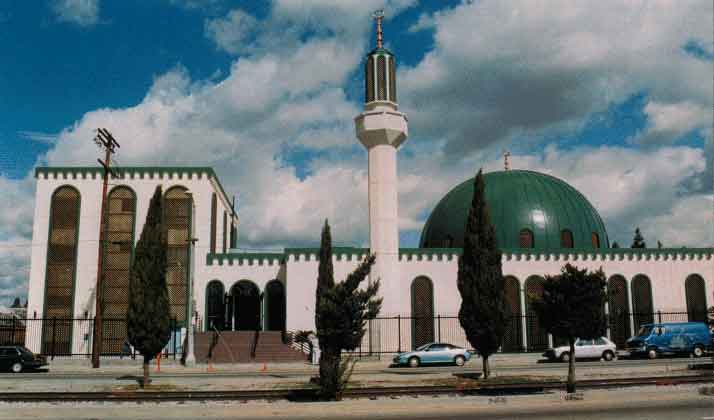
mosques: the basics
The heart of Islamic worship and religious life is the mosque (in proper Arabic, the masjid; "mosque" derives from a Spanish transliteration). When Muhammad first founded the Islamic umma, the obligatory prayers to God were performed outdoors. As the umma spread throughout western Asia and the Mediterranean, the mosque took on particular architectural characteristics. Some of these characteristics are merely traditional; others are required by shari'a (Islamic law).

This is the Masjid Omar, located in Los Angeles (near the USC campus). It was built in the 1970s, but incorporates stylistic features that became standard for mosques in the early caliphate: the dome over the main prayer hall (appropriated from Byzantine churches, but quickly standard for Islamic mosques), and the minaret, the tower from which the muezzin (prayer-caller) calls Muslims to prayer five times a day. Not all mosques have domes and minarets, but in major cities (ancient, medieval, and modern) they have functioned as architectural signals of Islamic identity.
These two American mosques show the adaptation of this standard form:
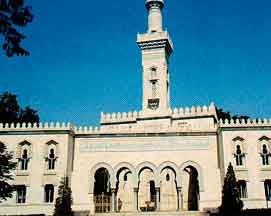
Here the minaret (tower) is visible, and many of the elements invoke "eastern" architectural elements (the columns, arches, and other details). The lack of a dome, however, and the light coloring gives the building an angular, almost neoclassical aura befitting its location in Washington, D.C.
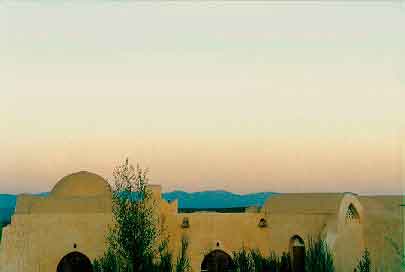
This mosque, located in New Mexico, retains the dome and hints of the arches common in Mediterranean mosques, but incorporates these elements into the low, rounded adobe structure common to the Southwest. There is no towering minaret, which would detract from the southwestern architectural idiom.
While architectural elements on the exterior are adaptable, some elements of the mosque are standard, and even obligatory.
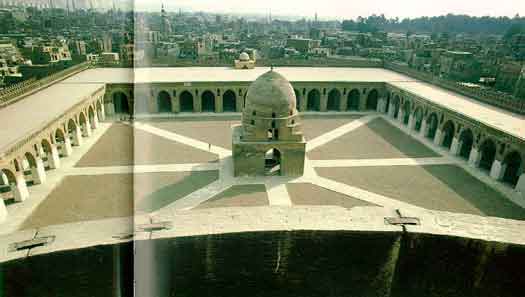
Mosques will have a fountain in the exterior courtyard (as seen here, in monumental fashion at a mosque in Cairo) so that ablutions (surface cleansing) may be performed before salat (prayer). Ablutions will put the Muslims in a state of ritual fitness before prayer.
Every mosque must orient those praying towards the qibla--the direction of the Ka'aba, the sacred shrine in Mecca. To this end, a mosque will have a mahrib: a niche in the wall that indicates the qibla, and will often be the site of artistic elaboration.
